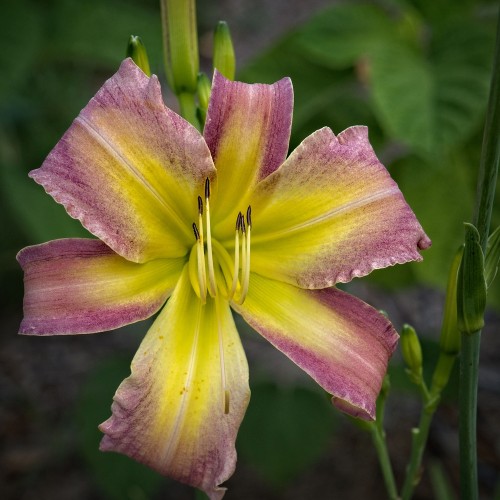
daylily
Hemerocallis 'Curly Rosy Posey'
Cycle:
Herbaceous Perennial
Watering:
Average
Hardiness Zone:
3 - 9
Flowers:
Flowers
Sun:
Full sun,part shade
Leaf:
Yes
Growth Rate:
Low
Maintenance:
Low
Salt Tolerant:
Yes
Care Level:
Medium
watering
Daylilies need to be watered evenly and moderately, once weekly when temperatures are cooler and twice weekly when temperatures reach 75 degrees Fahrenheit or higher. Soaking the soil with approximately 1 inch of water each time is usually sufficient. To reduce the risk of disease, be sure to avoid wetting the foliage when watering the Daylilies. In late autumn and winter months, water should be reduced to once a month or less. They can survive long periods of drought once they are established, so it's best to err on the side of underwatering rather than overwatering.
sunlight
Daylilies need about 8-10 hours of sunlight each day for optimum growth and flowering. They should be planted in a location that is sunny at least until midday, when more shade can be beneficial. This species does not handle too much direct harsh sunlight in very hot climates. Partial shade is beneficial for this particular variety of daylily (Hemerocallis 'Curly Rosy Posey').
pruning
Daylilies (Hemerocallis 'Curly Rosy Posey') should be pruned between late winter and early spring once they have become dormant. Daylilies benefit from regular yearly pruning in order to maintain their shape and size, as well as reduce the risk of disease. Pruning should be done with a pair of pruning shears, sharp scissors, or a sharp knife. Cut back the dead or yellowing foliage, and any stems or leaves that are wilting or damaged. Be sure to remove all of the foliage, down to the ground. To maintain their shape and density, deadhead spent flowers weekly during blooming season. Lastly, apply a balanced granular fertilizer such as an all-purpose 10-10-10 after pruning and throughout the growing season to keep your daylily healthy and blooming.
